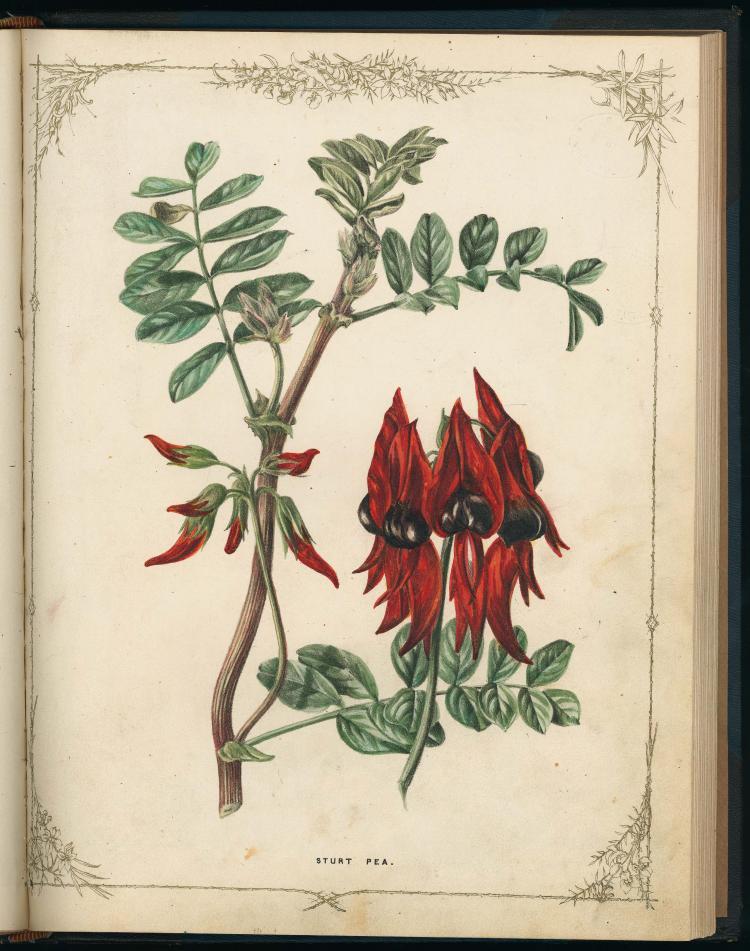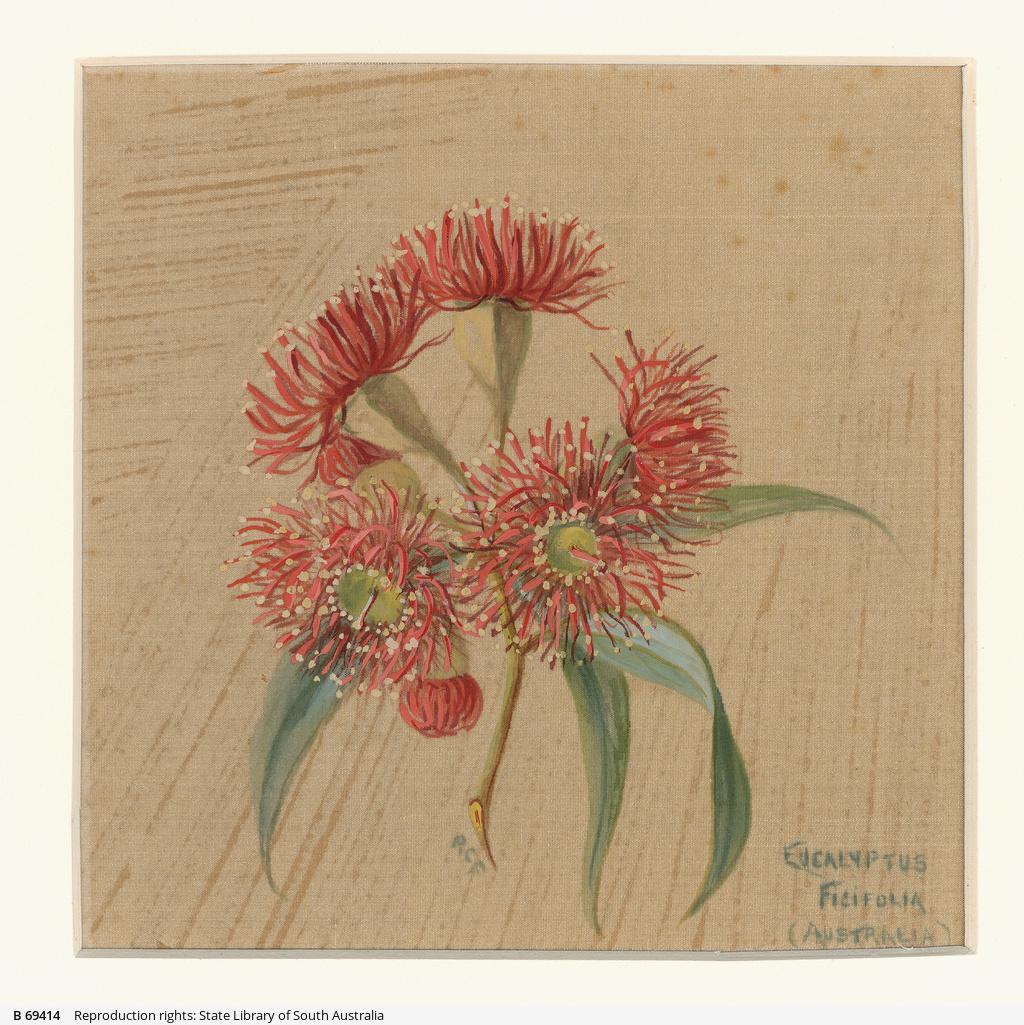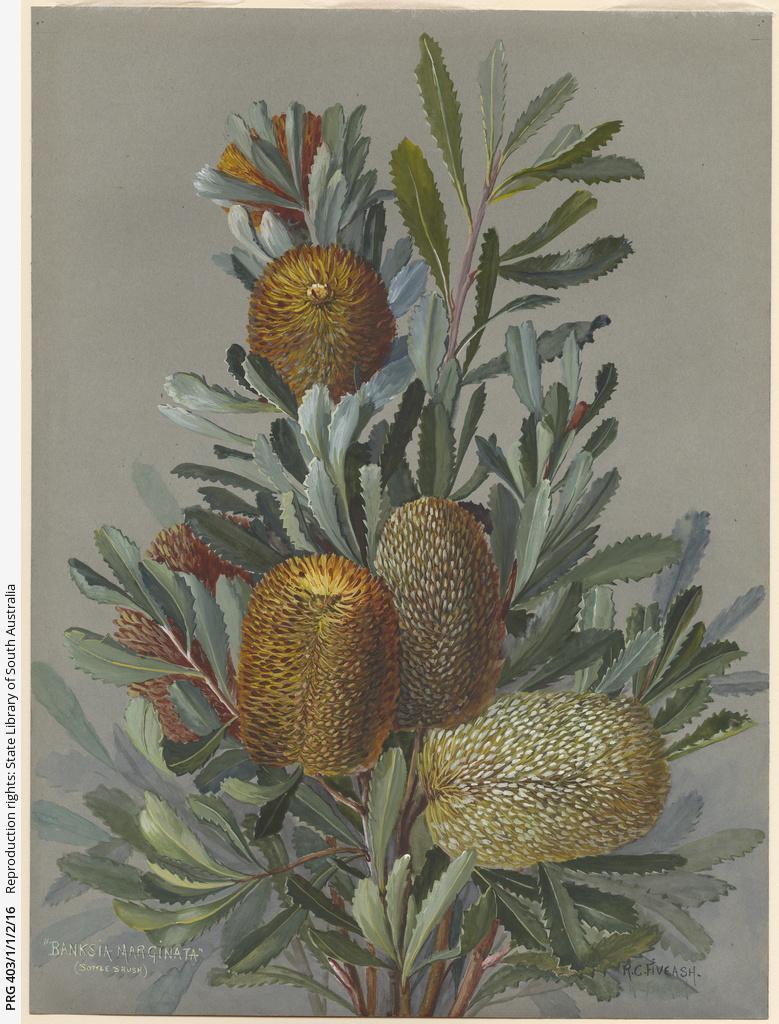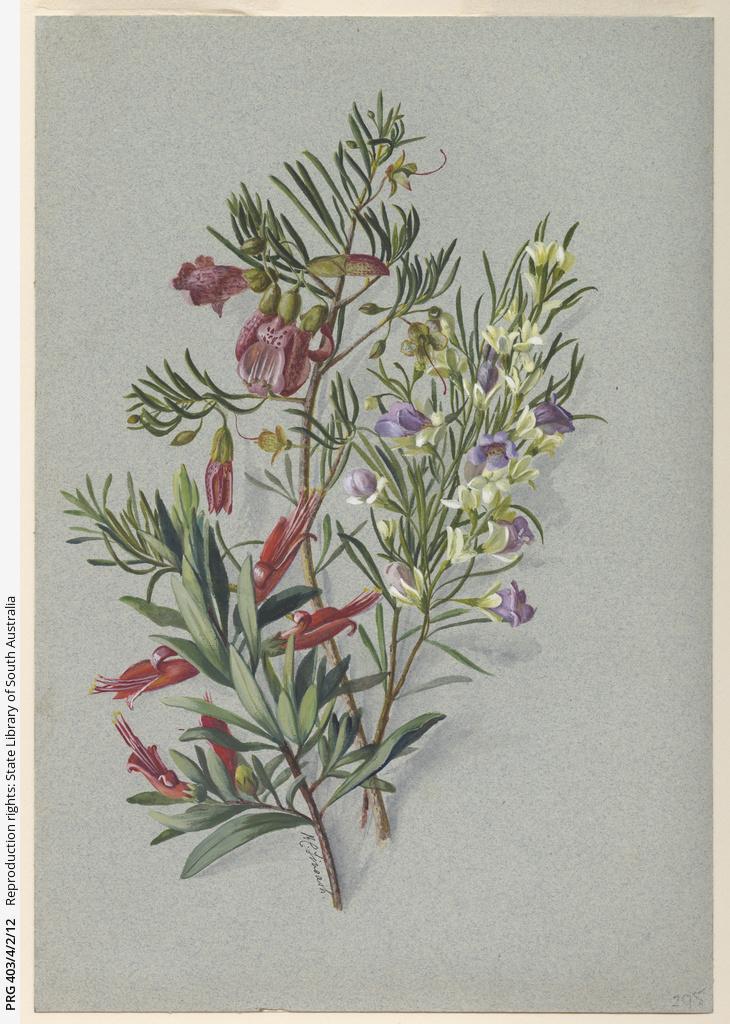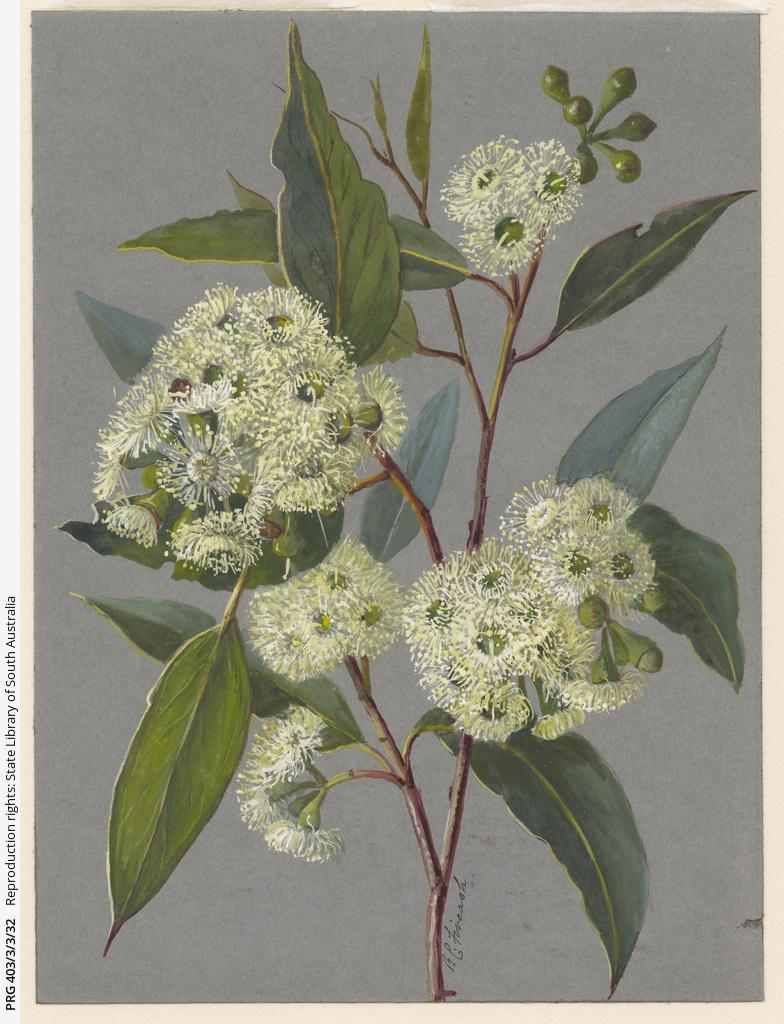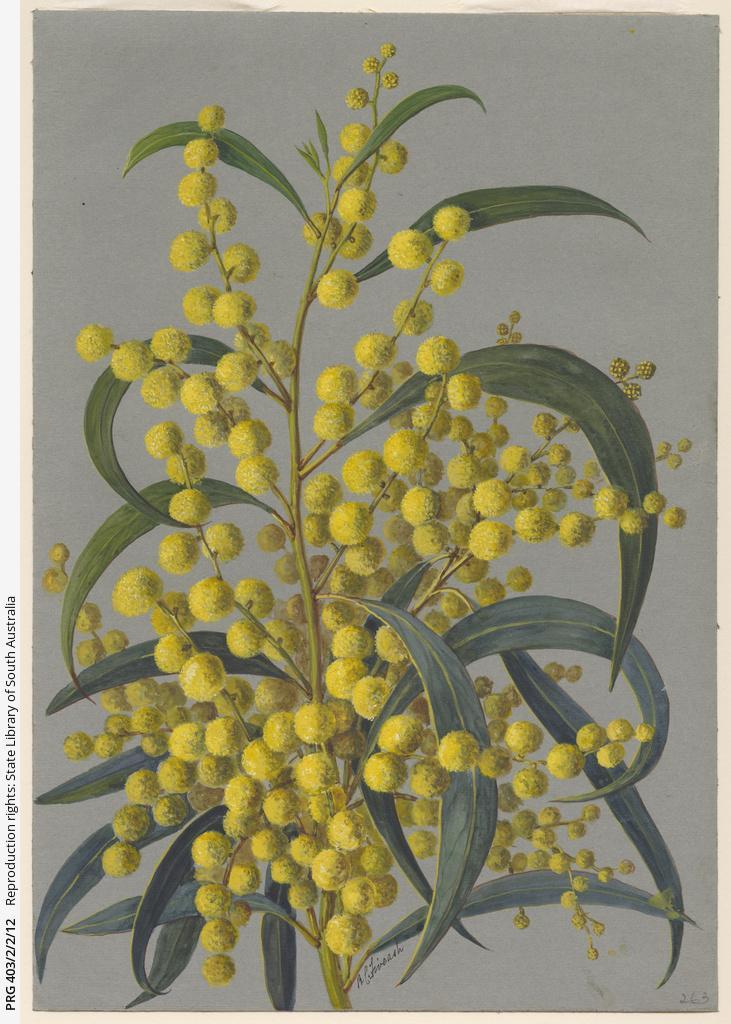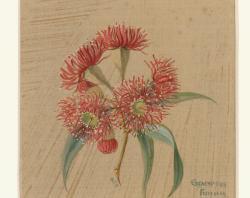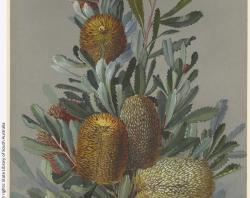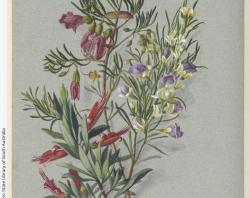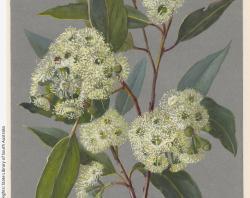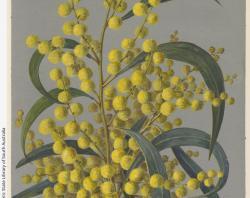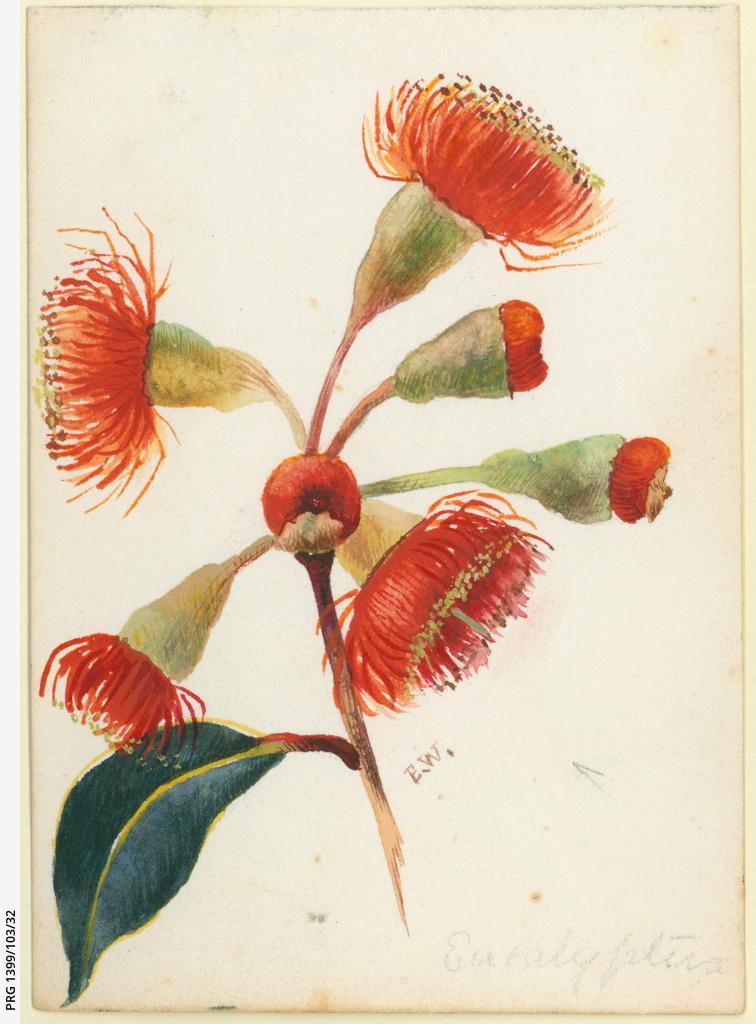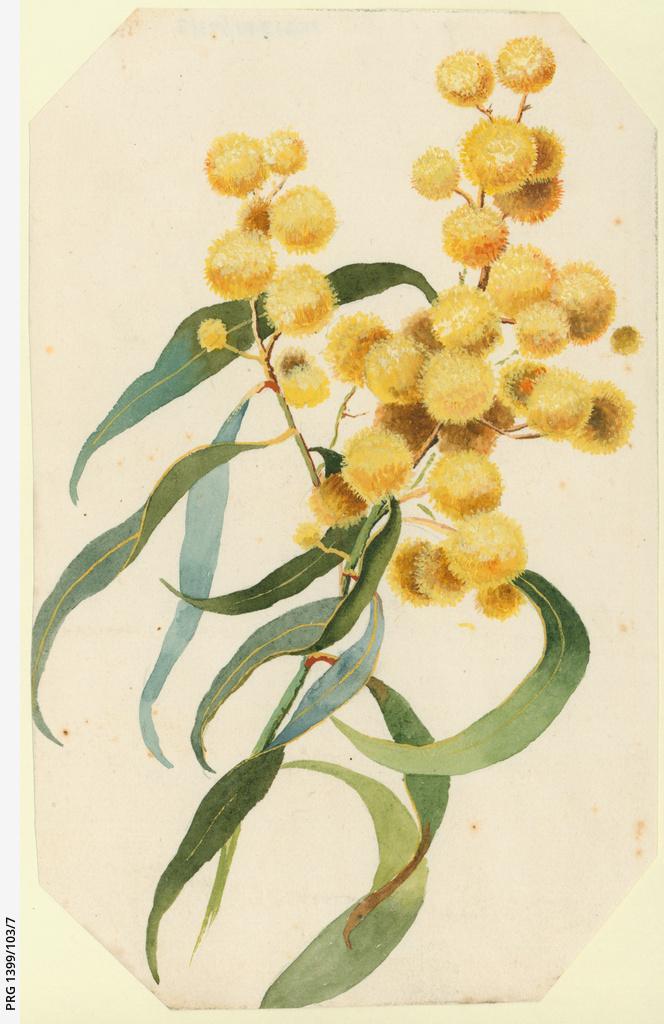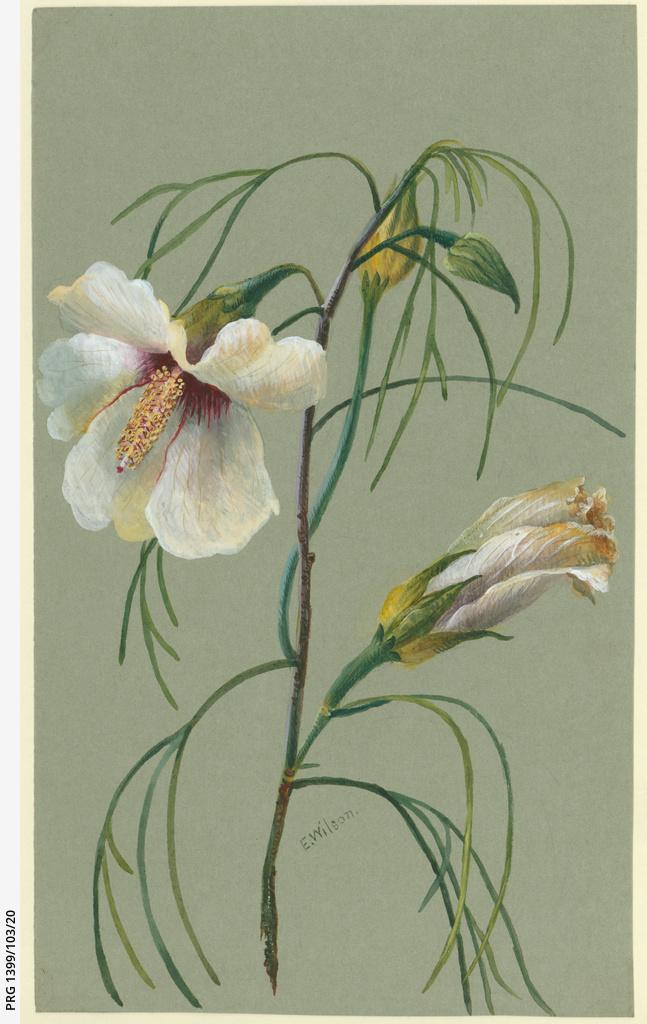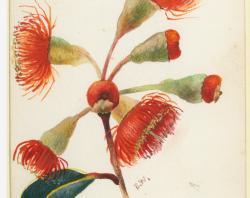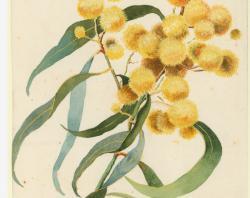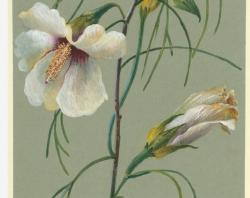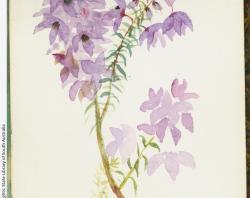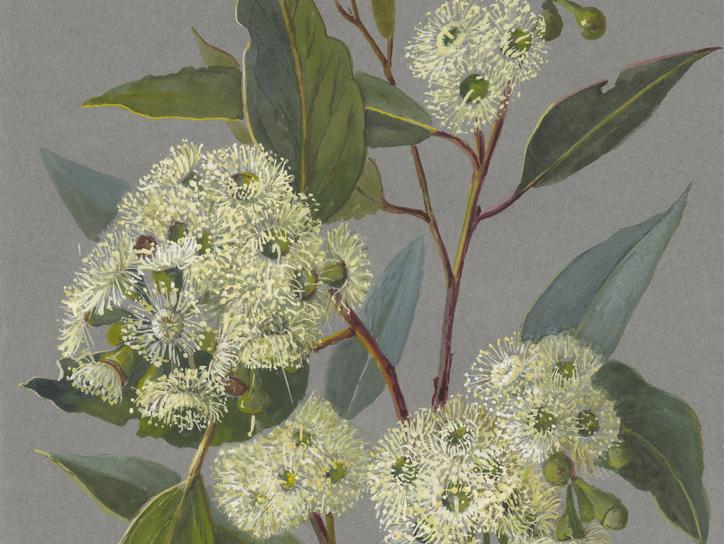
In 1882 Rosa Fiveash was chosen to illustrate the multi-volume Forest Flora of Australia by the conservator of forests, John Ednie Brown and became sought after as a scientific illustrator in zoology and ethnology as well as botany. She was employed by Dr Edward C Stirling, EW Waite and the SA Museum. She worked for thirty years with Dr RS Rogers to illustrate his works on South Australian orchids. Along with the State Library of South Australia, the SA Museum, Botanic Gardens of SA and the State Herbarium hold collections of her original works.
Two other significant South Australian botanical artists were Matilda Wilson, born around 1836 and her daughter Emily Annie Lanyard Wilson. Matilda’s brother Stephen King Jr was the illustrator on the John McDouall Stuart expedition of 1861-1863.
![Stephen King and young woman [SLSA: PRG 627/377]](/sites/default/files/styles/wysiwyg_embed/public/2021-09/PRG-627-377.jpeg?itok=puxIsu46)
The Wilson family produced many painters and illustrators including their descendant, Shirley Cameron Wilson whose extensive archival records and her book on Australian women painters are held by the State Library.The Botanic Garden holds Matilda Wilson’s work as she was employed by them to make botanical drawings. Matilda Wilson’s daughter, Emily Annie Lanyard Wilson (1865 – 1953), was also a talented artist, painting mainly wildflowers. She had lessons with Rosa Fiveash in china painting and also painted on silk. A set of silk dinner mats featuring Australian flowers was commissioned by the governor’s wife, Lady Audrey Tennyson. The State Library holds around 60 images of Emily AL Wilson's floral paintings viewable online.
One of Australia’s best-known flower painters also has a South Australian connection. Born in 1848 in Victoria, Ellis Rowan had no formal art training but a lot of natural talent. Eventually she became famous as a ‘flower hunter’. Her passion for wildflowers led her to become a naturalist and explorer, trekking across numerous countries in search of plants, insects and birds. After a sojourn in Western Australia, she came to Adelaide between 1906 and 1908. Soon after her arrival, she travelled to Broken Hill in search of Charles Sturt’s desert pea. She found it, painted non-stop and a few weeks later returned to Adelaide where she exhibited 150 works at the Arts Society rooms in the Institute Building on North Terrace. The exhibition received rave reviews. The South Australian Government paid a thousand pounds (roughly $94,000 dollars today) for a hundred of her works. Sir John Downer, former premier, bought another twenty which were later gifted to the State Government. Her work was famous in NZ, the UK and USA where she had exhibited and won numerous awards. One angry writer raged in The Chronicle that the government had no right to spend so much on an international artist when an Australian should have been employed to do the job. Ellis is believed to have laughed all the way to the bank.
Hero image caption: Rosa Fiveash, Eucalyptus oderata, SLSA: PRG 403/3/3/32
Written by Isabel WM Story, Community Engagement Librarian
